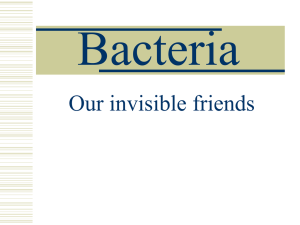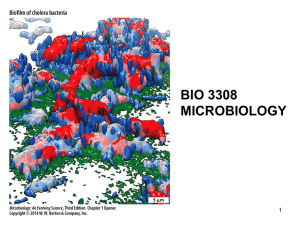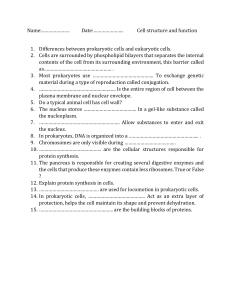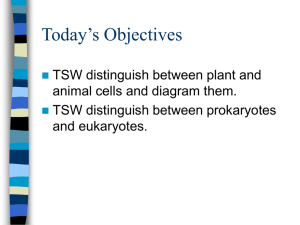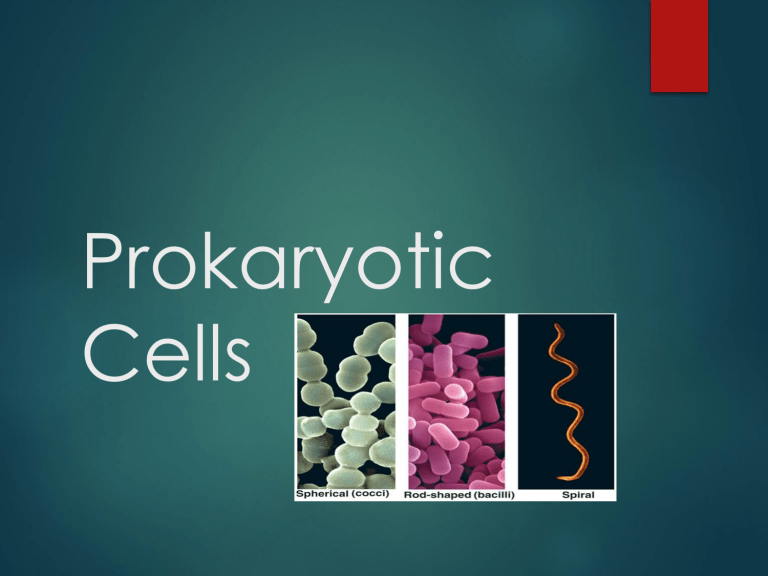
Prokaryotic Cells Prokaryotes are diverse and widespread Prokaryotes live in habitats — too cold, — too hot, — too salty, — too acidic, and — too alkaline for eukaryotes to survive. Some bacteria are pathogens, causing disease. But most bacteria on our bodies are benign or beneficial. Prokaryotic cells are smaller than eukaryotic cells. — Prokaryotes range from 1-5 ym in diameter. — Eukaryotes range from 10-100 ym in diameter. The collective biomass of prokaryotes is at least 10 times that of all eukaryotes. The Prokaryotic Cell Members of the prokaryotic world make up a vast heterogeneous group of very small single-celled organisms. Include bacteria and archae, although the majority are bacteria The thousands species of bacteria are differentiated by many factors such as: Morphology (shape), chemical composition (often detected by staining reactions), nutritional requirements, biochemical activities, and sources of energy (sunlight or chemicals) These differences can only be seen with the use of a microscope Size, Shape, and Arrangement Prokaryotic cells have three common cell shapes. —- Cocci are spherical prokaryotic cells. They sometimes occur in chains that are called streptococci. — Bacilli are rod-shaped prokaryotes. Bacilli may also be threadlike, or filamentous. — Spiral prokaryotes are like a corkscrew. • Short and rigid prokaryotes are called spirilla. • Longer, more flexible cells are called spirochetes. Cocci Bacili Spiral Prokaryote population growth — occurs by binary fission, — can rapidly produce a new generation within hours, an — can generate a great deal of genetic variation • by spontaneous mutations, • increasing the likelihood that some members of the population • will survive changes in the environment. The terms that describe how prokaryotes obtain energy and carbon are combined to describe their modes of nutrition Photoautotrophs obtain energy from sunlight and use carbon dioxide for carbon. Photoheterotrophs obtain energy from sunlight but get their carbon atoms from organic molecules. Chemoautotrophs harvest energy from inorganic chemicals and use carbon dioxide for carbon. Chemoheterotrophs acquire energy and carbon from organic molecules Role of Bacteria in the Envi ronment Several hundred species of bacteria live in and on our bodies, — decomposing dead skin cells, — supplying essential vitamins, and — guarding against pathogenic organisms. Prokaryotes in soil decompose dead organisms, sustaining chemical cycles. Prokaryotes help clean up the environment Prokaryotes are useful for cleaning up contaminants in the environment because prokaryotes • have great nutritional diversity, • are quickly adaptable, and • can form biofilms.

